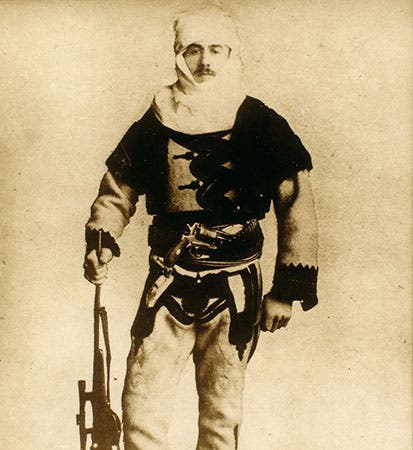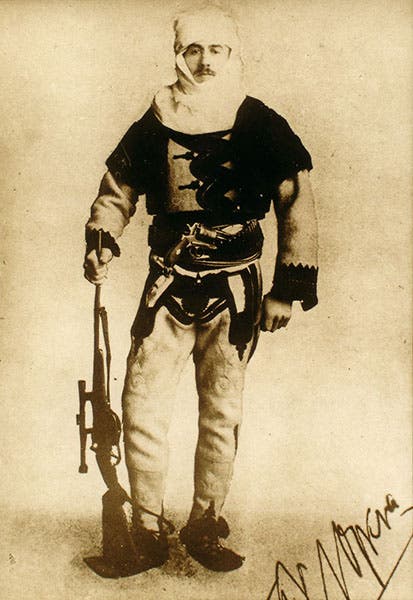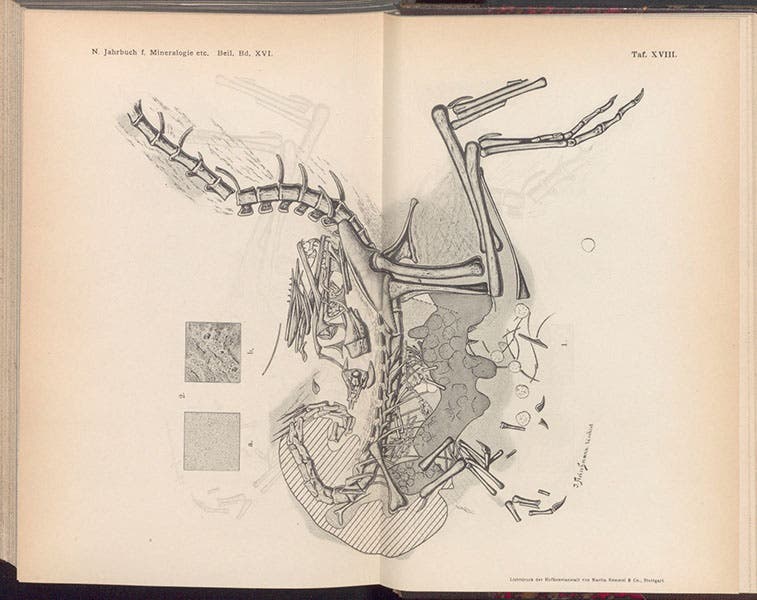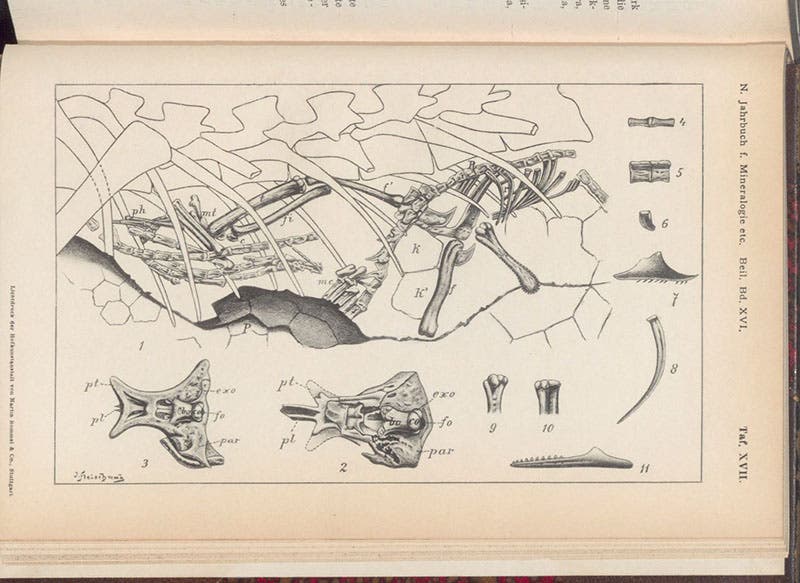Scientist of the Day - Franz Nopcsa
Baron Franz Nopcsa, a Hungarian dinosaur expert, and an activist for political independence for Albania, was born May 3, 1877, in Transylvania, the central part of Romania. In 1895, while still a teenager, he and his sister found some Transylvanian dinosaur bones that he sent off to Eduard Suess in Vienna, and Nopcsa soon followed the bones to Vienna, studying paleontology there for some years. Nopcsa came to be considered one of the world’s top dinosaur authorities, especially in the field he more-or-less invented, dinosaur physiology. While everyone else was concerned with how dinosaurs looked, and how their skeletons should be mounted, Nopcsa wondered how dinosaurs lived, and how they interacted with their environment. He was one of the very first to propose that dinosaurs might have been warm-blooded and might have lived an active lifestyle like mammals.
One of his first insights involved a dinosaur discovered by someone else: Compsognathus, found in Bavaria by Andreas Wagner in 1859 and described in 1861. We exhibited Wagner’s paper in our exhibition, Paper Dinosaurs. If you look closely at the rib-cage area of Wagner’s drawing of Compsognathus, you can see a number of tiny bones within the ribs. These were first noticed by the American Othniel Marsh, who thought that Compsognathus might have cannibalistically eaten its young. Nopcsa in 1903 published a paper in which he demonstrated that the tiny bones were in fact the remnants of the dinosaur's supper, and he even identified them as the remains of a certain species of lizard. The paper included two lithographed plates; one is a free copy of Wagner’s drawing of his Compsognathus (second image); the other is a closer view at the lizard bones within the dinosaur’s ribcage (fourth image). When we put Paper Dinosaurs online, we added a page showing one of the plates from Nopcsa’s 1903 paper.
Some years later, Nopcsa was the first to discover evidence of dwarfism in dinosaurs. A paleontologist had earlier found, on some Mediterranean islands, the fossil remains of elephants that were much smaller than normal, and had suggested that it made evolutionary sense for large animals in confined environments to gradually get smaller. Nopcsa in 1915 found the remains of what looked like a sauropod (such as Brontosaurus) but was much smaller, like a large horse with a ten-foot tail. He called it Titanosaurus dacus (the Dacians were a tribe that used to inhabit Hungary); it was renamed Magyarosaurus dacus in 1933. Since much of central Europe was under water in the Cretaceous era, Nopsca suggested that these were dwarf sauropods, confined to island life. Nopcsa’s paper was published in one of the proceedings of the Royal Hungarian Academy of Geology; if we have that journal, I could not find it, so we show instead an artist’s restoration of Magyarosaurus dacus, which however provides no sense of scale (fifth image).
In the latter half of his life, Nopcsa turned toward political activism, moving to Albania and working ceaselessly for Albanian independence from Turkey, which was actually achieved (briefly) in 1912. He apparently came very close to being elected King of the new republic. Our first image is a photo that shows Nopcsa in Albanian dress; he was a flamboyant figure, and openly gay. Nopcsa was also a scholar of Albanian history and culture, and he left thousands of pages of manuscripts on Albanian geology, geography, ethnology, and archaeology. I have been unable to determine how a Hungarian Transylvanian became so absorbed by Albania, which is not very close at all to Transylvania. Most of the detailed biographies of Nopcsa are in Hungarian, and presumably they explain how Nopcsa came to take up the Albanian cause, but I don't read Hungarian, and the shorter English studies are not saying.
And now we come to the most bizarre part of Nopcsa’s life – his death. On Apr. 25, 1933, he shot his longtime male secretary/companion in the head while he was asleep, and then turned the gun on himself. It was not a sudden whim; he left behind all sorts of notes, documents, and wills specifying where his manuscripts, papers, and specimens were to go. The notes do not say why he killed himself, although he did write that he shot his companion to prevent him from suffering in Nopcsa's absence. Most indications are that Nopcsa was out of funds and was going to be forced to sell his library and collections and was thereby much depressed. It was a sad end to a full and adventurous life.
William B. Ashworth, Jr., Consultant for the History of Science, Linda Hall Library and Associate Professor emeritus, Department of History, University of Missouri-Kansas City. Comments or corrections are welcome; please direct to ashworthw@umkc.edu.











